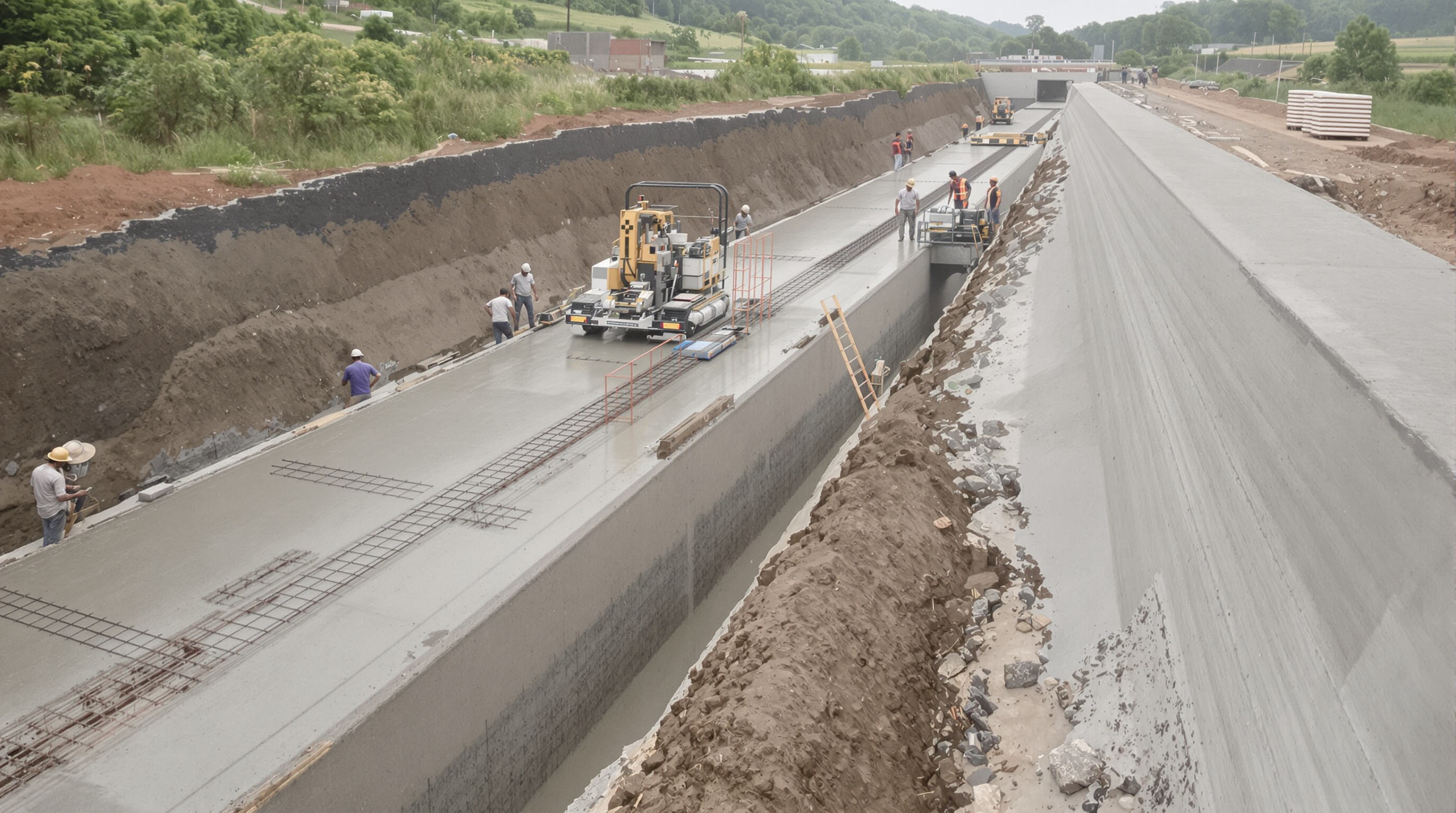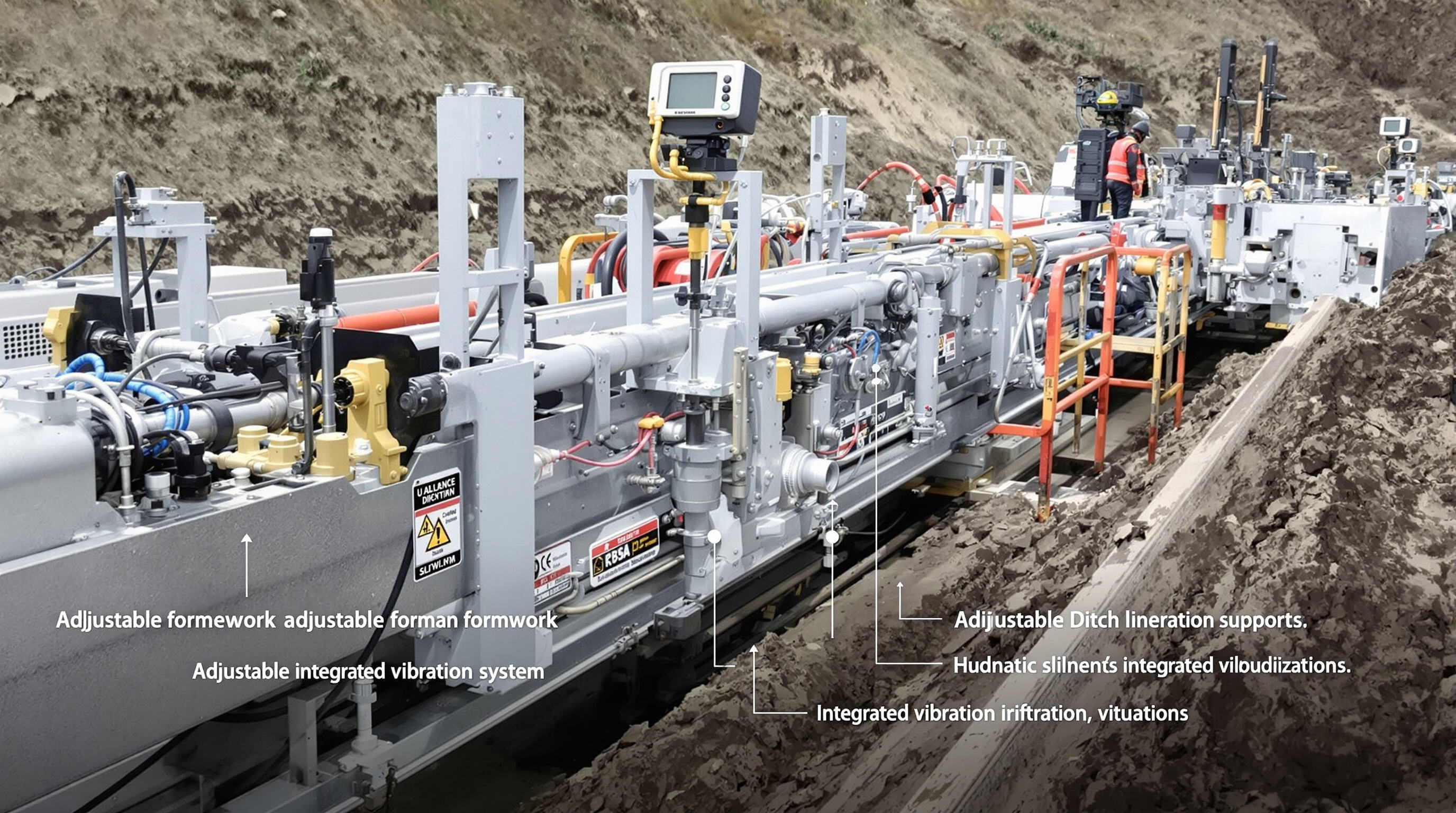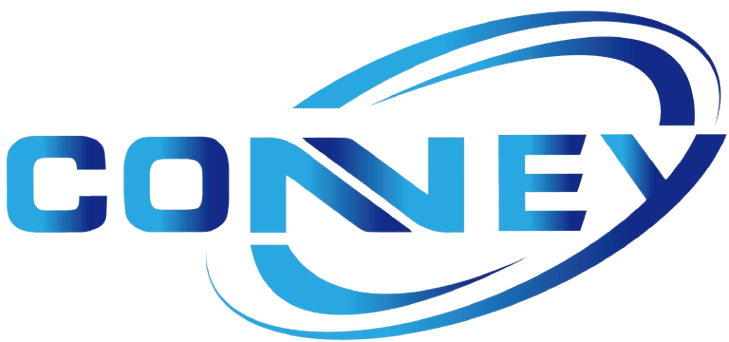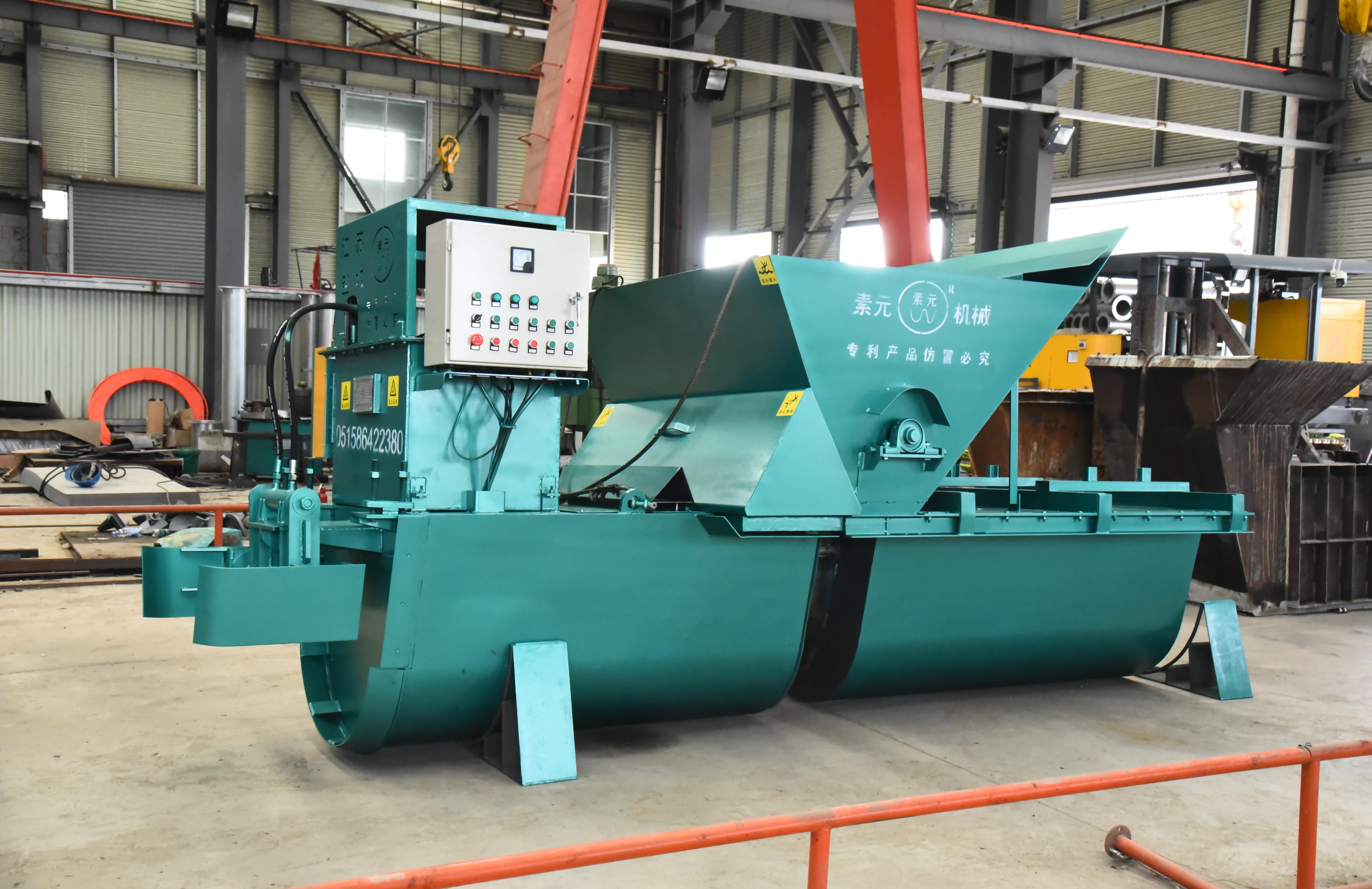What Is Canal Lining and How the U Shape Ditch Lining Machine Reduces Seepage Loss
Lining canals means putting down protective stuff like concrete inside ditches so we don't lose as much water and stop the dirt from washing away. There's this thing called the U Shape Ditch Lining Machine that makes the whole job easier because it automatically places the concrete where it needs to go. When done right, these machines create just the right thickness and shape which cuts down on water leakage quite a bit actually around half less than what happens in regular old unlined canals. What really works well is how the machine pours concrete continuously without leaving any spaces between sections. Plus, those fancy hydraulic adjustments help keep everything sloped properly so water flows smoothly through the system. This matters a lot especially in areas where water is already scarce and every drop counts for farmers who rely on good irrigation.
Evolution of Concrete Lining Techniques in Irrigation Systems

Back in the day, canal lining was all about sweating buckets setting up forms and pouring concrete by hand, which typically led to bumpy surfaces that cracked easily after a few seasons. Things changed with machines like the U Shape Ditch Lining Machine that brought automation into play. These modern systems use lasers to get everything level right and monitor how tight the material gets compacted as it goes along. According to AgriWater's findings from last year, projects now take around 40 percent less time than before. What's even better is that the concrete stays strong throughout the whole canal section at about 35 MPa compression strength. That means canals built this way last roughly 25% longer than those made using old school hand pouring techniques.
Key Design Features of the U Shape Ditch Lining Machine for Optimal Performance

- Adjustable Formwork: Modular steel molds adapt to canal widths from 1.5m to 4m, maintaining uniform U-shaped geometry critical for hydraulic efficiency.
- Integrated Vibration System: Eliminates air pockets during pouring, enhancing concrete density to 2,400 kg/m³.
- GPS-Assisted Grading: Ensures a 0.2%–0.5% slope accuracy for gravity-fed water distribution.
- Self-Propelled Chassis: Operates on terrain with up to 15° inclines, enabling deployment in mountainous agricultural zones.
This combination of precision engineering and mobility allows the machine to line 200–300 meters of canal daily—triple the output of semi-mechanized alternatives.
Accelerating Construction Speed with the U Shape Ditch Lining Machine
Reducing manual labor and shortening project timelines through automation
The U Shape Ditch Lining Machine is changing how canals get built because it takes care of several key steps automatically that used to need tons of people working manually. Traditional methods require big teams just to form the ditch shape, pour materials, and finish everything properly. But this new tech does all those things at once without needing constant supervision from workers. We're talking about cutting down on labor needs by around 40 percent and getting projects finished 25 to 30 percent faster than before. What's really impressive is that operators using this machine can lay down over 300 meters of canal each day with pretty much the same quality every time. This means no waiting around for bad weather to pass or scrambling to find skilled workers when they're needed most. Plus, since the whole system works independently, there's less danger for workers who would otherwise be exposed to dangerous situations on site such as collapsing trenches during excavation work.
Real-time adjustments and continuous pouring capabilities for uninterrupted operation
The machine's built-in sensors let it react to changes in the ground as it works along. With its laser guidance system, it keeps alignment down to the millimeter level, all while making automatic adjustments to how thick the concrete is and how fast it gets laid down. This constant pouring process stops those weak spots from forming where sections meet something that happens all too often with traditional methods. What's more, when operations run for over ten hours straight, the concrete cures properly without those annoying inconsistencies that lead to so many fixes after construction wraps up.
Comparative analysis: Traditional methods vs. U Shape Ditch Lining Machine application
| Construction Factor | Traditional Methods | U Shape Machine Application |
|---|---|---|
| Labor Requirement | 15-20 workers per 100m | 2-3 operators per 100m |
| Daily Progress Rate | 50-80 meters | 250-350 meters |
| Surface Imperfection Rate | 3-5 defects per 100m | <0.5 defects per 100m |
| Weather Vulnerability | High (work stoppages) | Low (covered operation) |
This operational contrast demonstrates how the machine transforms efficiency paradigms. Manual techniques incur compounding delays from sequential tasks—forming before pouring, curing before finishing. The unified process executes all stages in a single pass, cutting project timelines by 40% while improving quality consistency.
Ensuring Structural Integrity and Long-Term Durability of Canals
How Precise Lining Reduces Cracks and Extends Canal Lifespan
The modern U shape ditch lining machines cut down cracks by around 58% when compared to doing things manually, mainly because they keep the thickness within about 3 mm across canal surfaces according to Zia and Ali's research from 2017. Getting this kind of precision removes those problem spots where water tends to seep through first, which actually solves a big part of the issue since roughly one quarter of all canal failures happen due to inconsistent lining as noted by Uchdadiya and Patel back in 2014. What makes these machines really stand out though is how their automated sensors tweak the concrete consistency on the fly to stop those annoying shrinkage gaps that plague older methods. Traditional approaches had serious problems with temperature changes causing about a third of structural issues according to Li and colleagues in their 2021 study.
Uniform Concrete Distribution and Strength Consistency with Automated Lining
With its matched auger and vibration setup, the machine gets about 95% consistent material density throughout, which actually meets all the national standards for concrete quality. When we keep the water to cement ratio right around 0.45 to 0.5, the strength differences across the whole canal drop down to under 8%, whereas old fashioned manual pouring can vary by as much as 22%. And this kind of uniformity really matters when it comes to standing up against freezing weather. The automated lining holds up through over 50 freeze thaw cycles without showing any signs of wear, so these irrigation channels last twice as long in areas where temperatures regularly dip below freezing.
Maximizing Cost and Resource Efficiency in Canal Projects
Reducing Material Waste Through Precision-Controlled Concrete Application
The latest U Shape Ditch Lining Machines can save around 23% on materials thanks to their laser guidance systems that lay down just the right amount of lining material. Traditional approaches tend to pour too much because people make mistakes when measuring manually, but these new machines keep things pretty consistent throughout the whole canal area, staying within about 2 millimeters thickness difference between spots. Engineers have been talking about this kind of precision for years now, especially since studies show that wasting less material doesn't compromise strength at all. What makes these machines really work well is their sensor tech that tweaks how fast concrete flows depending on what the ground looks like right then and there. This means less mess during installation and definitely saves money later on when cleaning up after the job.
Long-Term Economic Benefits of Investing in Automated Canal Construction
Putting down around $85k to $120k for a U Shape Ditch Lining Machine usually starts paying itself back after about three or four jobs when looking at all those savings on labor costs, repair bills, and the money saved from better water retention. The automated systems cut down on having to fix things twice because they eliminate those frustrating problems like uneven curing spots and cold joints that plague manual work so much. People who actually operate these machines say their projects finish about 60% quicker than before, which means contractors can take on more work throughout the year without needing to hire extra hands. When we look at the big picture over 15 years, owners find themselves getting roughly nine dollars back for every one spent initially thanks to lower maintenance headaches and canals that last way longer than traditional methods allow.
Scaling Up: Integration of the U Shape Ditch Lining Machine in National Water Management
Deployment Strategies in Large-Scale Irrigation Programs
Putting U Shape Ditch Lining Machines to work in big irrigation projects needs careful step-by-step planning. First comes testing small areas to see if the machines actually work on different types of ground before rolling them out across whole regions. The main control centers keep track of all these machines through GPS signals, which helps save materials and cuts down on people needing to watch everything manually by almost half. Look at how this works in practice with something massive like China's South North Water Transfer Project. There, having those machines constantly line channels with concrete made finishing the job happen about 32 percent faster according to the NAWAPA Review from last year.
Adaptability Across Diverse Terrains and Climatic Conditions
Modern ditch lining machines conquer geographical challenges through modular designs:
- Slope Handling: Hydraulic stabilizers maintain precision on gradients up to 25°
- Material Versatility: Adjustable extrusion heads accommodate concrete mixes from arid to tropical formulations
-
Temperature Resilience: Insulated hoppers prevent curing issues in -20°C to 50°C extremes
Field tests in Rajasthan’s desert canals and Bangladesh’s floodplains demonstrated 98% structural integrity retention after monsoon cycles (ICID 2024).
Future Trends in Automated Canal Infrastructure and Smart Water Management
IoT-enabled U Shape Ditch Lining Machines will soon incorporate:
| Technology | Impact |
|---|---|
| Embedded sensors | Real-time hardness monitoring during pouring |
| AI-driven pattern recognition | Predictive crack prevention through density analysis |
| Satellite sync | Automated alignment corrections minimizing human intervention |
| These developments enable integration with national smart water grids, dynamically adjusting lining thickness based on watershed data. The FAO forecasts such systems reducing global irrigation water waste by 27 billion m³/year by 2030—advancing sustainable development goals through digital-physical convergence. |
FAQ Section
What is the U Shape Ditch Lining Machine?
The U Shape Ditch Lining Machine is a specialized machinery designed to automate the canal lining process with concrete, significantly reducing manual labor and speeding up construction timelines.
How does this machine improve canal construction efficiency?
By integrating advanced engineering features like GPS-assisted grading, self-propelled chassis, and modular formwork, it allows for precise and rapid canal lining, increasing daily progress rates significantly compared to traditional methods.
What are the economic benefits of using the U Shape Ditch Lining Machine?
Investing in the machine offers long-term savings on materials, labor costs, and repairs, while enhancing water retention capabilities. This helps canal projects become economically viable and sustainable.
Can the U Shape Ditch Lining Machine be used in any terrain?
Yes, the machine’s design allows it to operate effectively in diverse terrains and climates, handling gradients up to 25°, and functioning in temperature extremes from -20°C to 50°C.
Table of Contents
- What Is Canal Lining and How the U Shape Ditch Lining Machine Reduces Seepage Loss
- Evolution of Concrete Lining Techniques in Irrigation Systems
- Key Design Features of the U Shape Ditch Lining Machine for Optimal Performance
- Accelerating Construction Speed with the U Shape Ditch Lining Machine
- Ensuring Structural Integrity and Long-Term Durability of Canals
- Maximizing Cost and Resource Efficiency in Canal Projects
- Scaling Up: Integration of the U Shape Ditch Lining Machine in National Water Management
- FAQ Section




